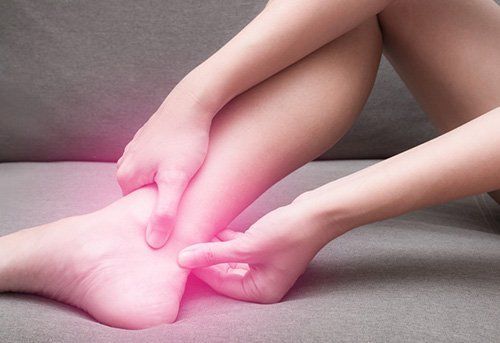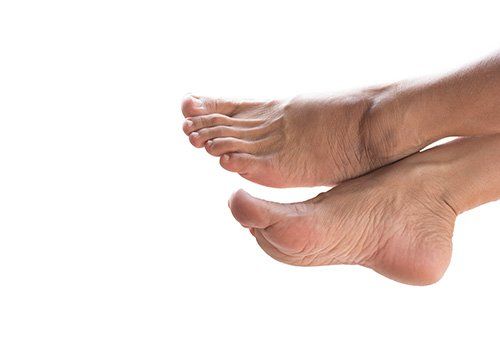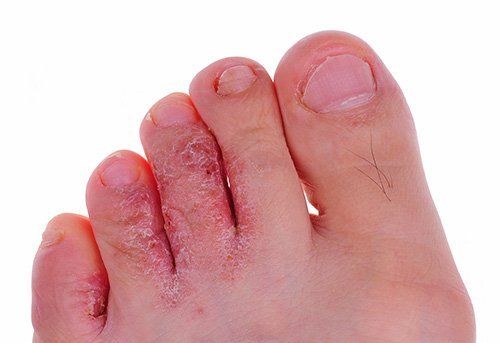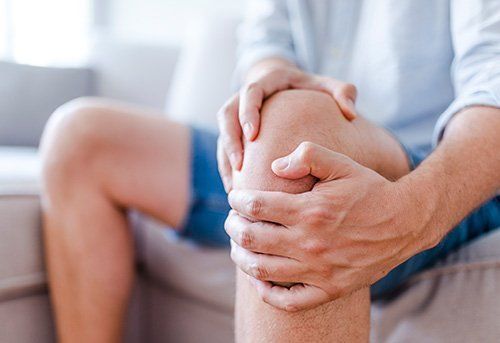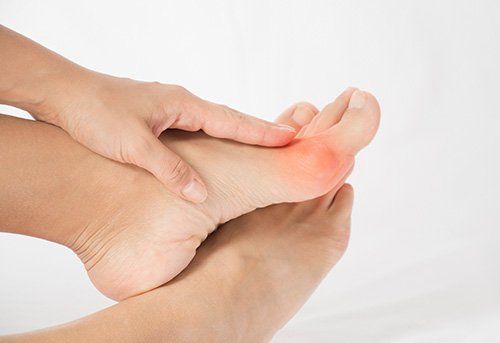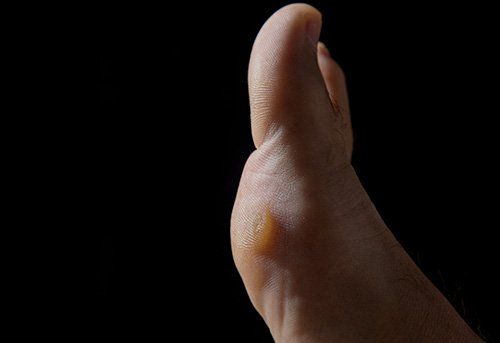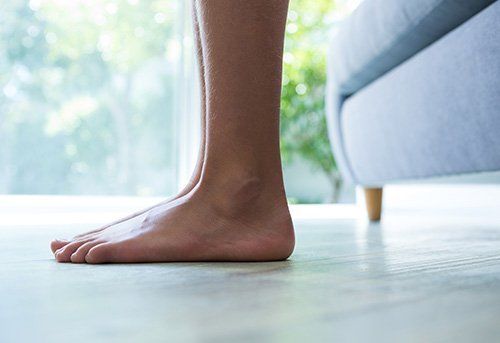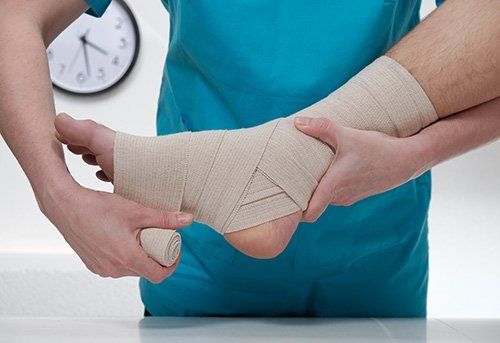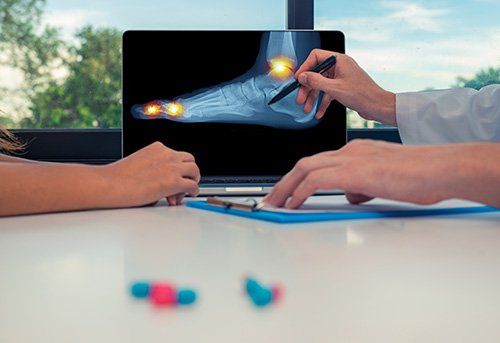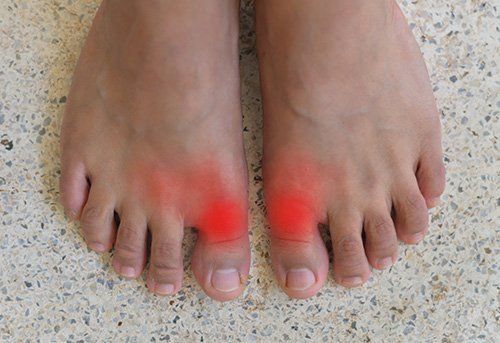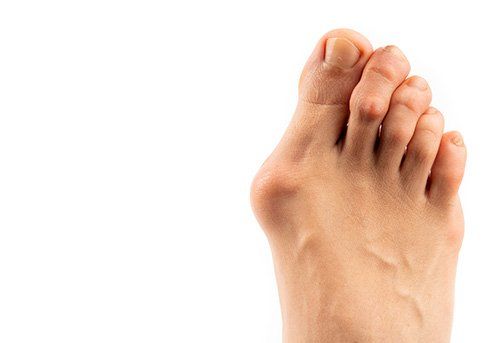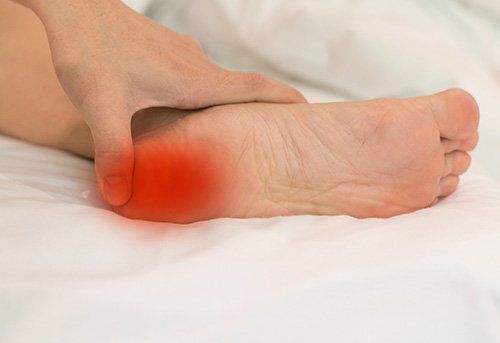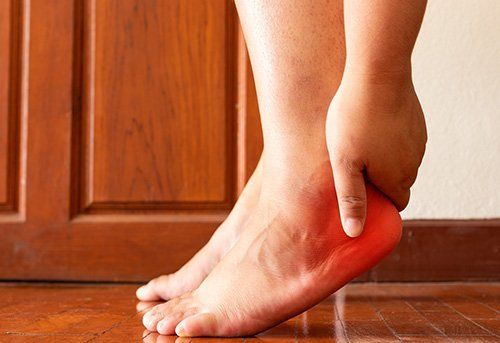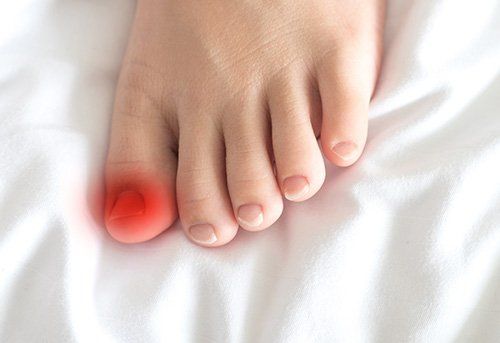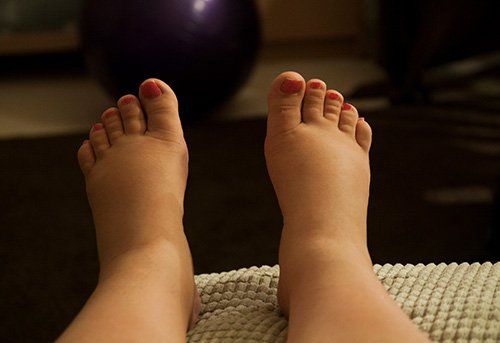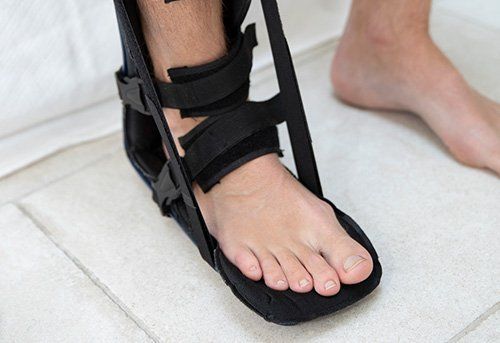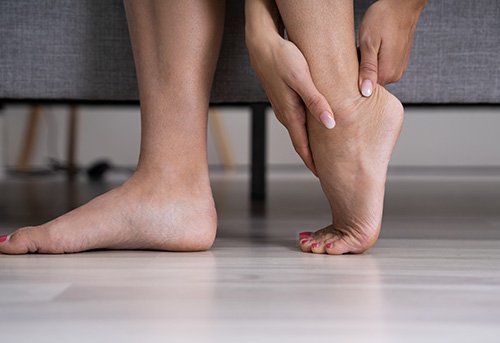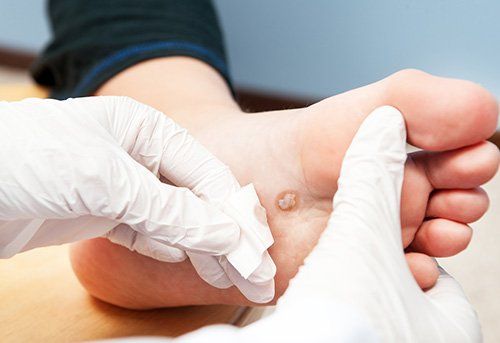FOOT-RELATED DISORDERS & ILLNESSES WE COMMONLY TREAT
Most Common Disorders Include:
Achilles Tendonitis
The Achilles tendon is the largest tendon in the human body. It is located at the back of the ankle joint and can be felt as a large, cord-like structure attaching to the back of the foot. Since tendons serve to attach muscles to bone, the Achilles tendon also attaches the large calf muscles, the gastrocnemius and soleus, to the back of the heel bone, the calcaneus.
Adult Flatfoot
Posterior tibial tendon dysfunction is one of several terms to describe a painful, progressive flatfoot deformity in adults. Other terms include posterior tibial tendon insufficiency and adult acquired flatfoot.
Athlete's Foot
Athlete's foot is caused by a fungal infection of the skin on the foot. The majority of these infections are caused by one of three fungal agents called dermatophytes. Athlete's foot is by far the most common fungal infection of the skin. The infection can be either acute or chronic.
Arthritis (Joint Pain)
Stiffness of the big toe joint is termed Hallux Limitus. Hallux is the medical term for the big toe. When the big toe possesses no motion, it is termed Hallux Rigidus. To confuse the topic, the big toe joint may appear to have normal motion, but this motion can be limited when weight is on the foot and during the normal standing and walking.
Bunions
One of the more common conditions treated by podiatric surgeons is the painful bunion. Patients with this condition will usually complain of pain when wearing certain shoes, especially snug fitting dress shoes, or with physical activity, such as walking or running. Bunions are most commonly treated by conservative means.
Calluses
Corns and calluses are areas of thick skin that result form excessive pressure or friction over a boney prominence. When these areas develop on the bottom of the foot they are called calluses. When they occur on the top of the toes they are called corns. They can also occur between the toes, the back of the heels and the top of the foot.
Diabetic Conditions
Peripheral Neuropathy is a nerve condition that affects the arms, hands, legs, and feet. The most common form of peripheral neuropathy is due to diabetes.
Flat Feet
Posterior tibial tendon dysfunction is one of several terms to describe a painful, progressive flatfoot deformity in adults. Other terms include posterior tibial tendon insufficiency and adult acquired flatfoot.
Fractures
When excessive stress is placed upon the ball of the foot, a hairline break (fracture) of a long metatarsal bone may occur. This occurs most frequently to the second, third, or fourth metatarsal but can occur in any bone. Frequently, the injury is so subtle that you may not recall any specific occurrence.
Gout
Gout is caused by abnormal metabolism of substances called purines that result in the accumulation of uric acid in the bloodstream. Purines are a by-product of cell break down. When the excretion of the uric acid is hampered the accumulated uric acid in the bloodstream causes crystalline deposits to form in joints or in the soft tissues.
Hallux Limitus
Stiffness of the big toe joint is termed Hallux Limitus. Hallux is the medical term for the big toe. When the big toe possesses no motion, it is termed Hallux Rigidus. To confuse the topic, the big toe joint may appear to have normal motion, but this motion can be limited when weight is on the foot and during the normal standing and walking.
Hammertoes
Hammertoes are a contracture of the toes as a result of a muscle imbalance between the tendons on the top and the tendons on the bottom of the toe. They can be flexible or rigid in nature. When they are rigid, it is not possible to straighten the toe out by manipulating it. Frequently, they develop corns on the top of the toe as a result of rubbing on the shoe.
Heel Pain, Heel Spurs
The most common form of heel pain, is pain on the bottom of the heel. It tends to occur for no apparent reason and is often worse when first placing weight on the foot. Patients often complain of pain the first thing in the morning or after getting up to stand after sitting. The pain can be a sharp, searing pain or present as a tearing feeling in the bottom of the heel.
Heel pain, Plantar Fasciitis
A common foot complaint is pain in the bottom of the heel. This is often referred to as heel spurs or plantar fasciitis. It commonly is painful the first few steps in the morning or after rest. It tends to get worse the longer one stands during the day. It is caused by subtle changes in foot structure that occurs over time. These changes result in the gradual flattening of the arch.
Ingrown Toenails
Ingrown toenails are due to the penetration of the edges of the nail plate into the soft tissue of the toe. It begins with a painful irritation that often becomes infected. With bacterial invasion, the nail margin becomes red and swollen often demonstrating drainage or pus. In people who have diabetes or poor circulation, this relatively minor problem can be become quite severe.
Neuroma
A neuroma is the swelling of nerve that is a result of a compression or trauma. They are often described as nerve tumors. However, they are not in the purest sense a tumor. They are a swelling within the nerve that may result in permanent nerve damage. The most common site for a neuroma is on the ball of the foot.
Plantar Fasciitis Arch Pain
Plantar fasciitis is an inflammation of a thick, fibrous ligament in the arch of the foot called the plantar fascia. The plantar fascia attaches into the heel bone and fans out toward the ball of the foot, attaching into the base of the toes. If this ligament is stretched excessively it will become inflamed and begin to cause pain.
Tarsal Tunnel Syndrome
Tarsal Tunnel Syndrome is due to compression of a nerve called the Posterior Tibial Nerve. The nerve passes into the foot from around the inside of the ankle just below the ankle bone. Just beyond this point, the nerve enters the foot by passing between a muscle and a bone in the foot. This area is called the Tarsal Tunnel.
Warts
The common wart is known as verruca vulgaris. They are caused by a viral infection of the skin. This occurs as a result of direct contact with the virus. They do not spread through the bloodstream. They occur more commonly in children than adults. When they occur on the bottom of the foot, they are called plantar warts.

